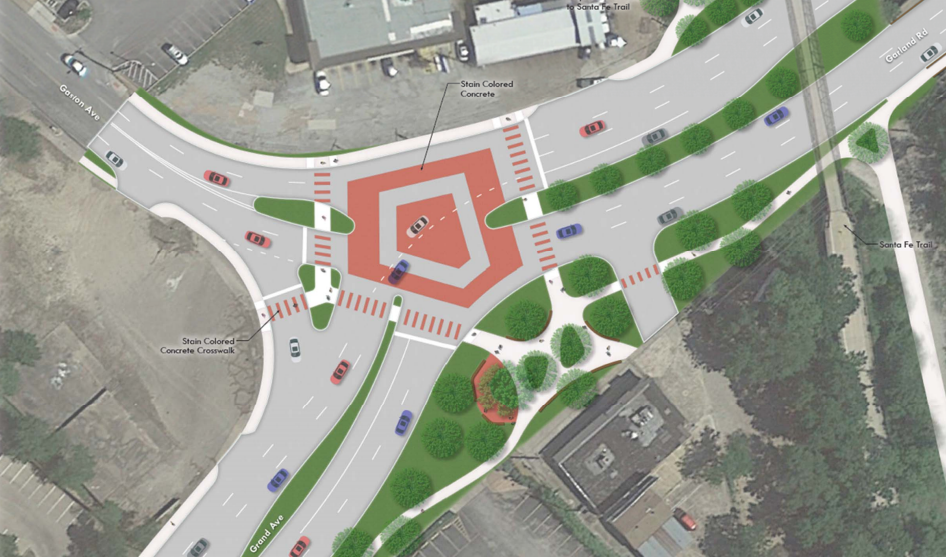
A version of the proposed Garland-Grand-Gaston intersection (Image courtesy of TxDOT).
Drivers at Gaston-Garland-Grand are treated to an intersection unlike any other. A free pass lane, a double protected right hand, a half lane that comes out of nowhere and everyone’s favorite – a protected left turn where drivers have to immediately yield to oncoming traffic turning right in the aforementioned double protected right turn. Fun for everyone!
The intersection is headed for a needed redesign, and TxDOT’s preferred option is meant to slow traffic down in the intersection and provide more accessibility and safety for pedestrians. Gaston neighbors are pushing for a different design, but TxDOT hasn’t budged so far, as city staff already sent a letter of preference for the design, called a “Reverse T.”
So how will the traffic lights work in the new design?
TxDOT Public Information Officer Tony Hartzel explained that the redesigned intersection will be what is called a three phase signal design, which is transportation speak for when one direction goes at a time. “It means that one leg of the intersection will have green, while the other two legs will remain red,” he wrote. “So for example, when northbound Grand is green, Gaston is red and southbound Garland is red.”
Hartzel also said the intersection will not have any right turn on red options, which should increase safety for pedestrians. Even the right turn from eastbound Gaston to southbound Grand will not be able to turn right on red, but that could change.
He said that the City of Dallas will have ultimate control over the signal timing and operations. After observing how the intersection is working, the city can adjust the signal timing in order to “optimize the traffic movements within the intersection,” Hartzel wrote.





